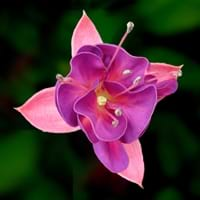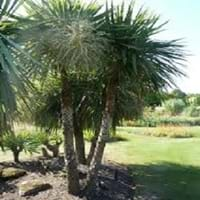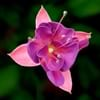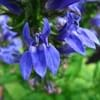Life Span
Perennial
Perennial
Type
Tender Perennial
Broadleaf Evergreen
Origin
Caribbean
New Zealand
Types
Fuchsia Decidua, Fuchsia Fulgens, Fuchsia Splendens, Fuchsia Microphylla
Not Available
Number of Varieties
Not Available
Habitat
Forest edges, Woods
Coastal Regions
USDA Hardiness Zone
9-10
8-11
AHS Heat Zone
10-9
Not Available
Sunset Zone
16, 17, 23, 24
21,22
Habit
Arching/Fountain-shaped
Upright/Erect
Flower Color
Orange Red
White
Flower Color Modifier
Not Available
Bicolor
Fruit Color
Not Available
White, Blue
Leaf Color in Spring
Purple, Dark Green
Burgundy, Dark Red, Copper
Leaf Color in Summer
Purple, Dark Green
Burgundy, Dark Red, Copper
Leaf Color in Fall
Purple, Dark Green
Burgundy, Dark Red, Copper
Leaf Color in Winter
Unknown
Burgundy, Dark Red, Copper
Leaf Shape
Long Linear
Long Narrow
Plant Season
Spring, Summer, Fall, Winter
Spring, Summer, Fall, Winter
Sunlight
Full Sun, Partial Sun, Partial shade
Full Sun, Partial Sun, Partial shade
Type of Soil
Clay, Loam, Sand
Loam, Sand
The pH of Soil
Acidic, Neutral
Neutral, Alkaline
Soil Drainage
Average
Well drained
Bloom Time
Indeterminate
Late Spring, Early Summer, Summer
Tolerances
Drought
Drought, Salt
Where to Plant?
Container, Ground, Pot
Ground
How to Plant?
Seedlings, Stem Planting, Transplanting
Stem Planting, Transplanting
Plant Maintenance
Medium
Medium
Watering Requirements
Requires regular watering
Average Water Needs
In Summer
Lots of watering
Lots of watering
In Spring
Moderate
Moderate
In Winter
Average Water
Average Water
Soil pH
Acidic, Neutral
Neutral, Alkaline
Soil Type
Clay, Loam, Sand
Loam, Sand
Soil Drainage Capacity
Average
Well drained
Sun Exposure
Full Sun, Partial Sun, Partial shade
Full Sun, Partial Sun, Partial shade
Pruning
Prune in spring, Prune lower leaves, Remove dead or diseased plant parts, Remove deadheads, Remove shoots
Prune if you want to improve plant shape, Remove damaged leaves, Remove dead leaves
Fertilizers
All-Purpose Liquid Fertilizer
All-Purpose Liquid Fertilizer
Pests and Diseases
Rhizoctonia Root Rot, Rust
Red blotch
Plant Tolerance
Drought
Drought
Flowers
Yes
Insignificant
Flower Petal Number
Single
Single
Foliage Texture
Medium
Coarse
Foliage Sheen
Matte
Not Available
Attracts
Hummingbirds
Caterpillar, Moths
Allergy
Asthma, Hay fever
Asthma
Aesthetic Uses
Showy Purposes
Beautification, Landscape Designing, Showy Purposes
Beauty Benefits
Not Available
Not Available
Environmental Uses
Air purification
Air purification
Medicinal Uses
Not Available
Diabetes, Dysentry, Stomach pain
Part of Plant Used
Flowers, Fruits
Leaves, Root, Stem
Other Uses
Not Available
Decoration Purposes, Employed in herbal medicine, Showy Purposes, Used As Food, Used as Ornamental plant
Used As Indoor Plant
Yes
No
Used As Outdoor Plant
Yes
Yes
Garden Design
Bedding Plant, Container, Feature Plant, Foundation, Hedges, Tropical
Container, Feature Plant, Foundation, Houseplant, Screening, Wind Break, Tropical
Botanical Name
FUCHSIA triphylla
CORDYLINE australis 'Red Star'
Common Name
Fuchsia
Cabbage Palm
In Hindi
फ्यूशिया
गोभी पेड़
In German
Fuchsie
Cabbage tree
In French
Fuchsia
arbre de chou
In Spanish
Fucsia
árbol de la col
In Greek
φουξία
λάχανο δέντρο
In Portuguese
Fúcsia
repolho árvore
In Polish
Fuksja
kapusta drzewo
In Latin
Fuchsia
brassica ligno
Phylum
Magnoliophyta
Magnoliophyta
Class
Dicotyledonae
Liliopsida
Order
Myrtales
Asparagales
Family
Onagraceae
Asparagaceae
Clade
Angiosperms, Eudicots, Rosids
Angiosperms, Monocots
Tribe
Not Available
Not Available
Subfamily
Not Available
Lomandroideae
Season and Care of Fuchsia and Cabbage Tree
Season and care of Fuchsia and Cabbage Tree is important to know. While considering everything about Fuchsia and Cabbage Tree Care, growing season is an essential factor. Fuchsia season is Spring, Summer, Fall and Winter and Cabbage Tree season is Spring, Summer, Fall and Winter. The type of soil for Fuchsia is Clay, Loam, Sand and for Cabbage Tree is Loam, Sand while the PH of soil for Fuchsia is Acidic, Neutral and for Cabbage Tree is Neutral, Alkaline.
Fuchsia and Cabbage Tree Physical Information
Fuchsia and Cabbage Tree physical information is very important for comparison. Fuchsia height is 45.70 cm and width 45.70 cm whereas Cabbage Tree height is 610.00 cm and width 240.00 cm. The color specification of Fuchsia and Cabbage Tree are as follows:
Fuchsia flower color: Orange Red
Fuchsia leaf color: Purple and Dark Green
Cabbage Tree flower color: White
- Cabbage Tree leaf color: Burgundy, Dark Red and Copper
Care of Fuchsia and Cabbage Tree
Care of Fuchsia and Cabbage Tree include pruning, fertilizers, watering etc. Fuchsia pruning is done Prune in spring, Prune lower leaves, Remove dead or diseased plant parts, Remove deadheads and Remove shoots and Cabbage Tree pruning is done Prune if you want to improve plant shape, Remove damaged leaves and Remove dead leaves. In summer Fuchsia needs Lots of watering and in winter, it needs Average Water. Whereas, in summer Cabbage Tree needs Lots of watering and in winter, it needs Average Water.





